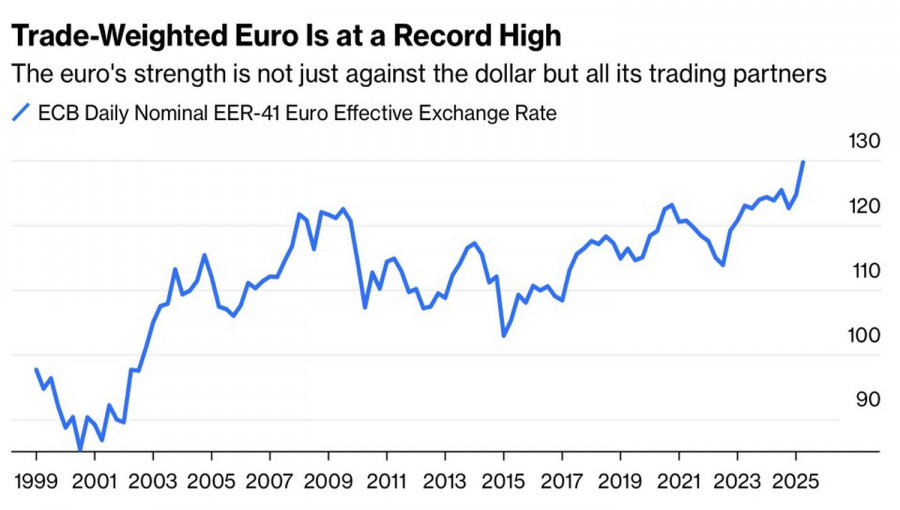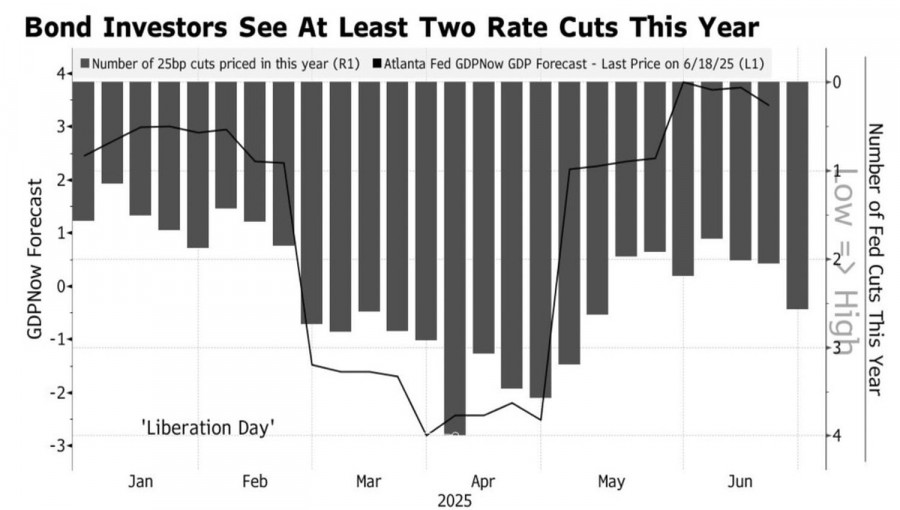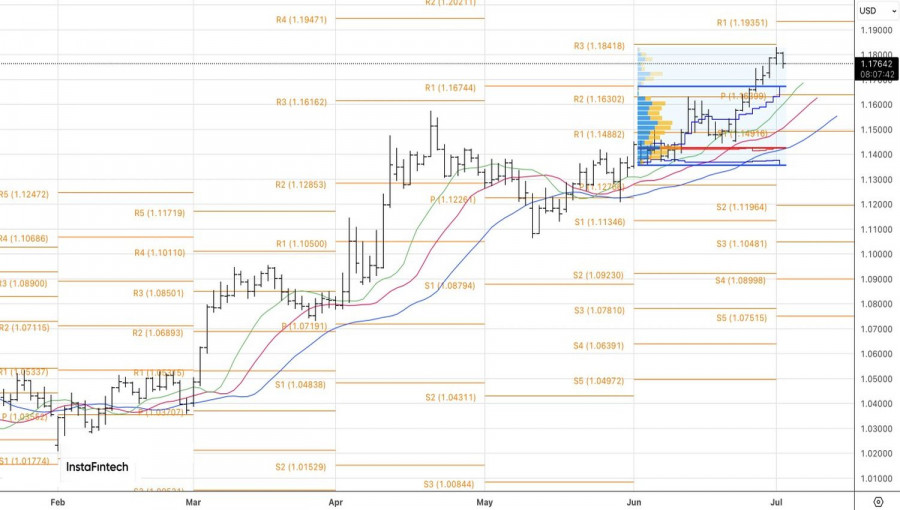See also


 03.07.2025 12:38 AM
03.07.2025 12:38 AMBe careful what you wish for. Euro supporters believe that EUR/USD will reach at least 1.25 by 2026. However, one must understand that while the eurozone may remain a unified market, its manufacturing momentum has always been driven by exports. With the trade-weighted euro reaching record highs, exports risk slowing down GDP growth and may force the European Central Bank to resume a cycle of monetary easing.
As investors adjust to tariffs, monetary policy is once again becoming the primary driver of currency dynamics on the Forex market. The main reason behind EUR/USD's surge to more than three-year highs lies in expectations that the Federal Reserve will cut the federal funds rate by a total of 125 basis points over the subsequent nine FOMC meetings. This process is expected to accelerate significantly in 2026, when Jerome Powell steps down and is replaced by a nominee of Donald Trump. The President wants to appoint someone who will aggressively ease monetary policy.
For the same period, the futures market expects the ECB to cut the deposit rate by only 25 basis points. These forecasts are already reflected in the EUR/USD exchange rate. If anything deviates from this outlook, the situation on Forex could change drastically, and the conditions for that are already present.
A sharp rise in the euro would tighten financial conditions, slow down the eurozone economy, and increase deflation risks. What should the ECB do in such a case? Precisely—cut rates!
Conversely, if Congress passes Donald Trump's "big, beautiful" tax cut proposal, it could fuel U.S. GDP and inflation. Just think—4.5 trillion dollars in fiscal stimulus! The Fed would have no choice but to keep the federal funds rate at 4.5%. This would deeply disappoint the futures market, speculators would begin to unwind the largest short positions on the U.S. dollar since 2023, and EUR/USD would collapse.
Such a scenario is entirely possible, which is why it would be preferable for central banks if the main currency pair rose very slowly. Exporters would then have time to adapt to a higher euro exchange rate than in the past.
For now, what was once a source of pride for the euro has become its Achilles' heel. Germany, with the world's largest trade surplus of $290 billion, is now in Trump's crosshairs. The U.S. President has no intention of being lenient with the European Union. It wouldn't be surprising if tariffs against the EU are increased starting July 9.
Technically, on the daily EUR/USD chart, a logical pullback has followed a prolonged rally. The depth of this correction will reveal how quickly the bears have recovered after being crushed. As long as the main currency pair trades above the upper boundary of the fair value range at 1.1675, the bulls continue to dominate the Forex market. For now, traders are advised to maintain a focus on buying during pullbacks.
You have already liked this post today
*The market analysis posted here is meant to increase your awareness, but not to give instructions to make a trade.



